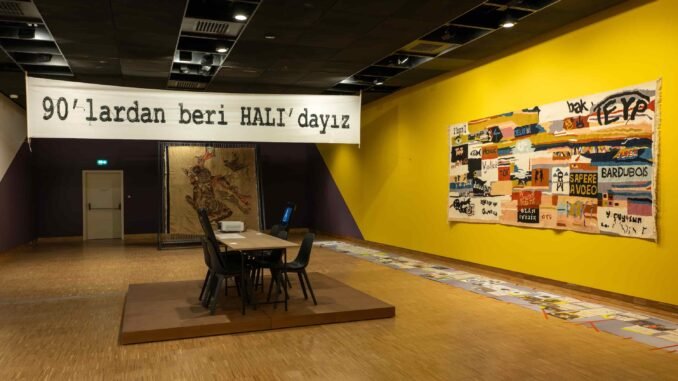
Founded by Garanti BBVA, Salt’s new exhibition “We’ve Been on the Carpet Since the ’90s” focuses on the approach to art education of the Carpet Workshop operating under the Painting Department of Mimar Sinan Fine Arts University (MSGSÜ). While exploring its relationship with issues of everyday life, it also draws attention to the potentials of creative dissent and collective production. Tracing the physical and conceptual ties meticulously built since the workshop’s foundation, the exhibition presents a collage compiled from the collaborative works, personal pieces, archival materials, and testimonies of artists who have passed through this space.
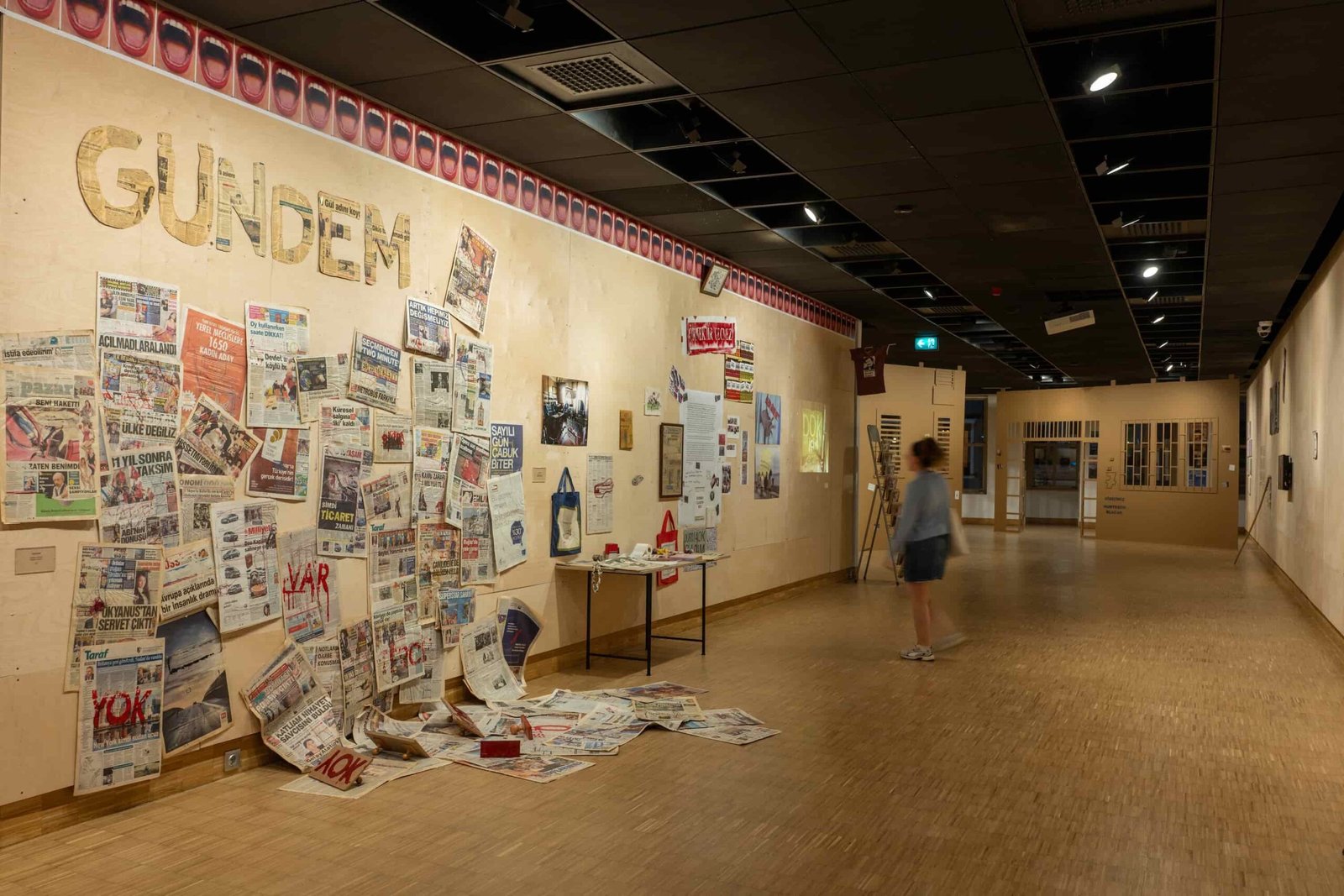 In Turkey, the place of contemporary art production and debates—energized in the 1990s and engaged with politics and social movements—remained limited within academic curricula. Yet in Istanbul, where practices diversified over time, a few dissenting voices gradually emerged even at MSGSÜ, an institution known for keeping its distance in order to safeguard established traditions. With its pedagogical approach to “learning together,” its open programs welcoming everyone, and its linkage of carpet weaving training to contemporary art, the Carpet Workshop carved out a unique position both within and beyond the institution. Through its principles and practices, it overturned the gendered hierarchies and ossified bureaucracy inherent in the academy, bringing students, artists, guests, and cultural workers around the same table and—most importantly—creating a rare model that “does not exclude the street.”
In Turkey, the place of contemporary art production and debates—energized in the 1990s and engaged with politics and social movements—remained limited within academic curricula. Yet in Istanbul, where practices diversified over time, a few dissenting voices gradually emerged even at MSGSÜ, an institution known for keeping its distance in order to safeguard established traditions. With its pedagogical approach to “learning together,” its open programs welcoming everyone, and its linkage of carpet weaving training to contemporary art, the Carpet Workshop carved out a unique position both within and beyond the institution. Through its principles and practices, it overturned the gendered hierarchies and ossified bureaucracy inherent in the academy, bringing students, artists, guests, and cultural workers around the same table and—most importantly—creating a rare model that “does not exclude the street.”
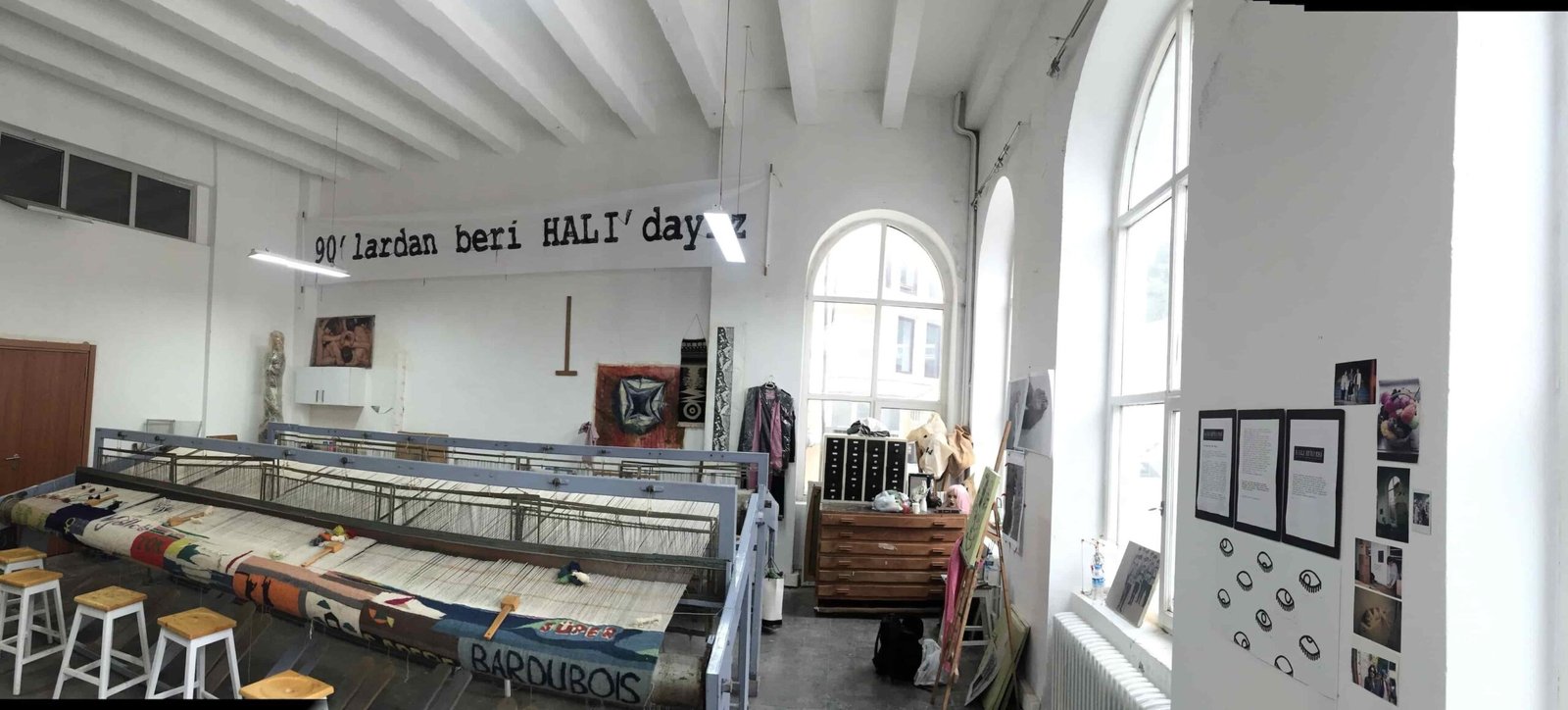
Established in the 1976–1977 academic year at the initiative and encouragement of painter and academic Özdemir Altan, and under the direction of painter and academic Zekai Ormancı (1949–2008), this applied workshop was long labeled the “relaxed studio,” even taken lightly due to the traditional associations of its name. For some students it was a last resort; others chose it so that the time spent in an applied studio would not “steal” from their painting. Yet this ease would yield an unexpected result in the years to come.
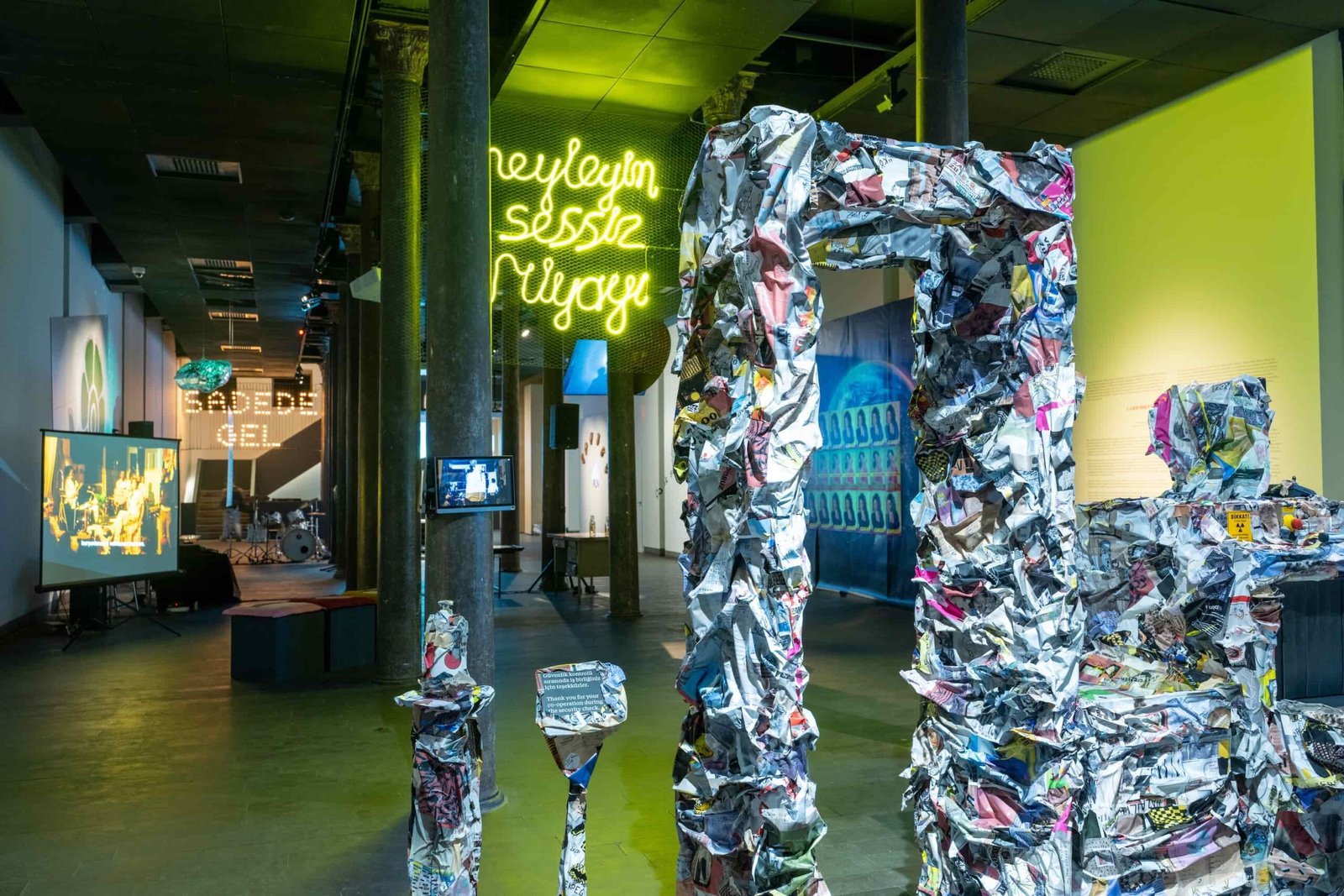 From 1992 onward, the dynamism spearheaded by visual artist and academic Gülçin Aksoy (1965–2024)—appointed as an assistant to the Carpet Workshop—and a group of students and companions who worked alongside her transformed the workshop day by day from the late 1990s onward. The synergy that emerged overflowed from the workshop’s door—which Aksoy kept open both physically and intellectually—into the school’s corridors and then into Istanbul’s contemporary art scene. Thanks to the relationships it forged in the 2000s with independent art initiatives in Istanbul, feminist circles, and interdisciplinary collectives, the Carpet Workshop’s model of production multiplied, diversified, and expanded.
From 1992 onward, the dynamism spearheaded by visual artist and academic Gülçin Aksoy (1965–2024)—appointed as an assistant to the Carpet Workshop—and a group of students and companions who worked alongside her transformed the workshop day by day from the late 1990s onward. The synergy that emerged overflowed from the workshop’s door—which Aksoy kept open both physically and intellectually—into the school’s corridors and then into Istanbul’s contemporary art scene. Thanks to the relationships it forged in the 2000s with independent art initiatives in Istanbul, feminist circles, and interdisciplinary collectives, the Carpet Workshop’s model of production multiplied, diversified, and expanded.
“You can weave a carpet, you can weave an idea”
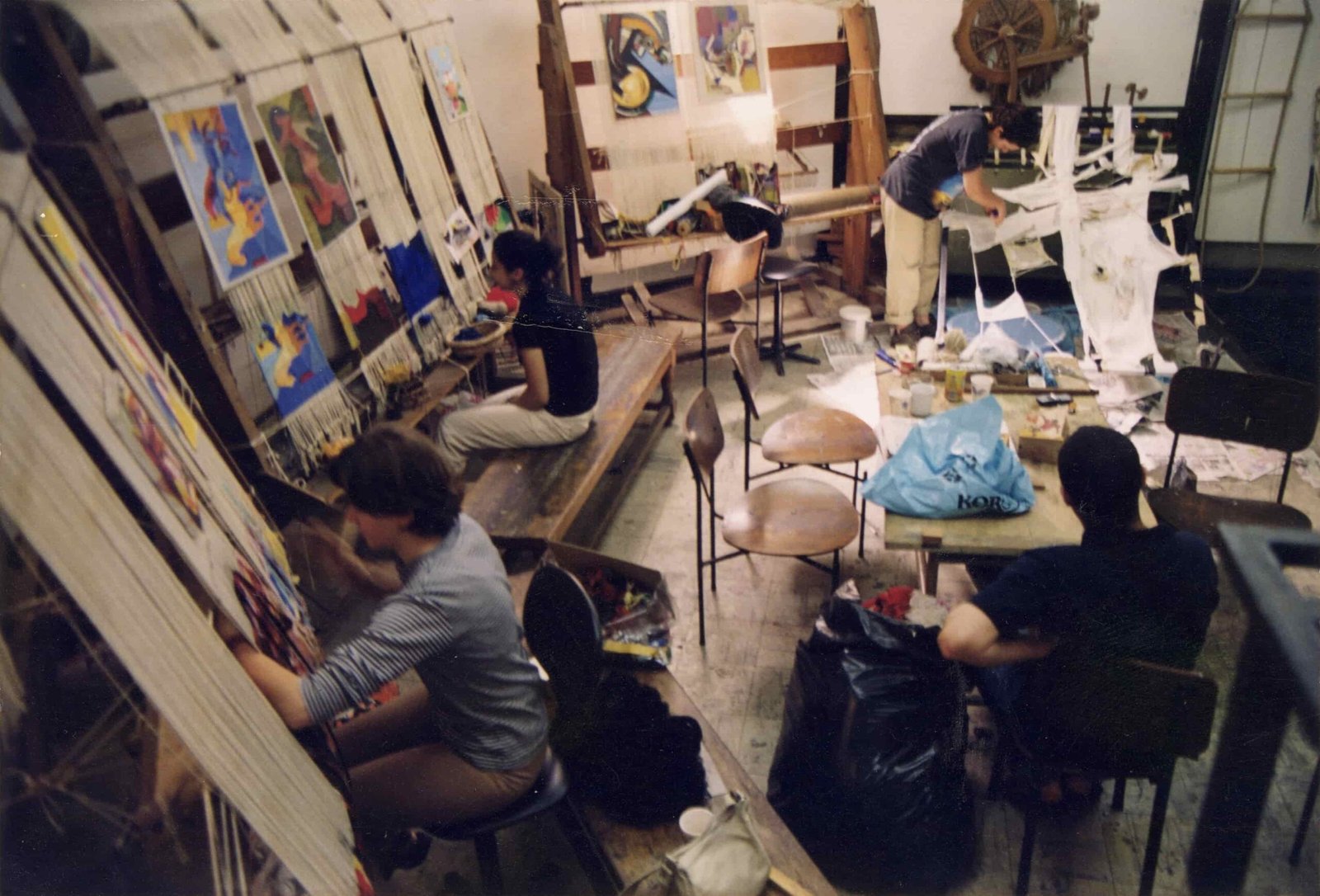 At the Carpet Workshop, yarn and weaving existed not only as materials and techniques but also as a long-term mode of thinking and relating. Rather than practicing a cloistered form of art education, Aksoy embraced the approach of “You can weave a carpet, you can weave an idea,” intertwining traditional carpet weaving with performance and everyday life. Together with students who thought, interpreted, and acted alongside her, she sought ways to produce conceptual openings from the (horizontal) wefts and (vertical) warps of weaving—playing with words to spin phrases and sounds. No longer confined to course schedules, the carpet became an “open studio” attentive to interests beyond the curriculum.
At the Carpet Workshop, yarn and weaving existed not only as materials and techniques but also as a long-term mode of thinking and relating. Rather than practicing a cloistered form of art education, Aksoy embraced the approach of “You can weave a carpet, you can weave an idea,” intertwining traditional carpet weaving with performance and everyday life. Together with students who thought, interpreted, and acted alongside her, she sought ways to produce conceptual openings from the (horizontal) wefts and (vertical) warps of weaving—playing with words to spin phrases and sounds. No longer confined to course schedules, the carpet became an “open studio” attentive to interests beyond the curriculum.
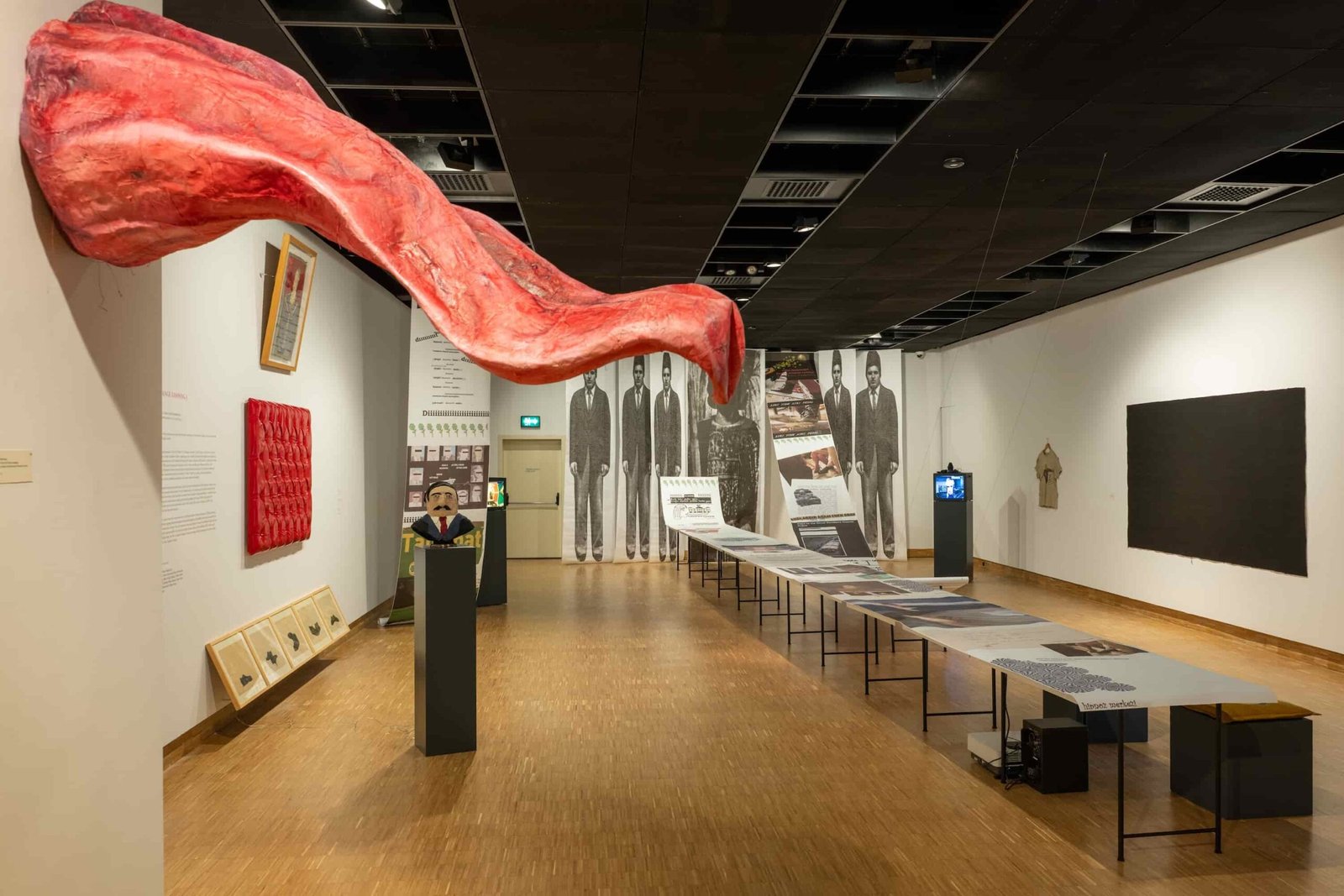 The Carpet Workshop addressed a host of issues—from the academy’s inertia and a male-dominated social structure to state apparatuses and institutional aesthetics. It caused gentle disruptions and playful jabs alike. Never losing sight of the agenda, the workshop’s responses to recurring issues gave rise to the AtılKunst artist collective (2006–2013), the performances “Garip Bir Pandik 1” (Carpet Workshop, 2011) and “Garip Bir Pandik 2” (Rumeli Han, 2012), the exhibition “3/1” (Carpet Workshop, 2013), as well as numerous plans and projects from fanzines to stitches.
The Carpet Workshop addressed a host of issues—from the academy’s inertia and a male-dominated social structure to state apparatuses and institutional aesthetics. It caused gentle disruptions and playful jabs alike. Never losing sight of the agenda, the workshop’s responses to recurring issues gave rise to the AtılKunst artist collective (2006–2013), the performances “Garip Bir Pandik 1” (Carpet Workshop, 2011) and “Garip Bir Pandik 2” (Rumeli Han, 2012), the exhibition “3/1” (Carpet Workshop, 2013), as well as numerous plans and projects from fanzines to stitches.
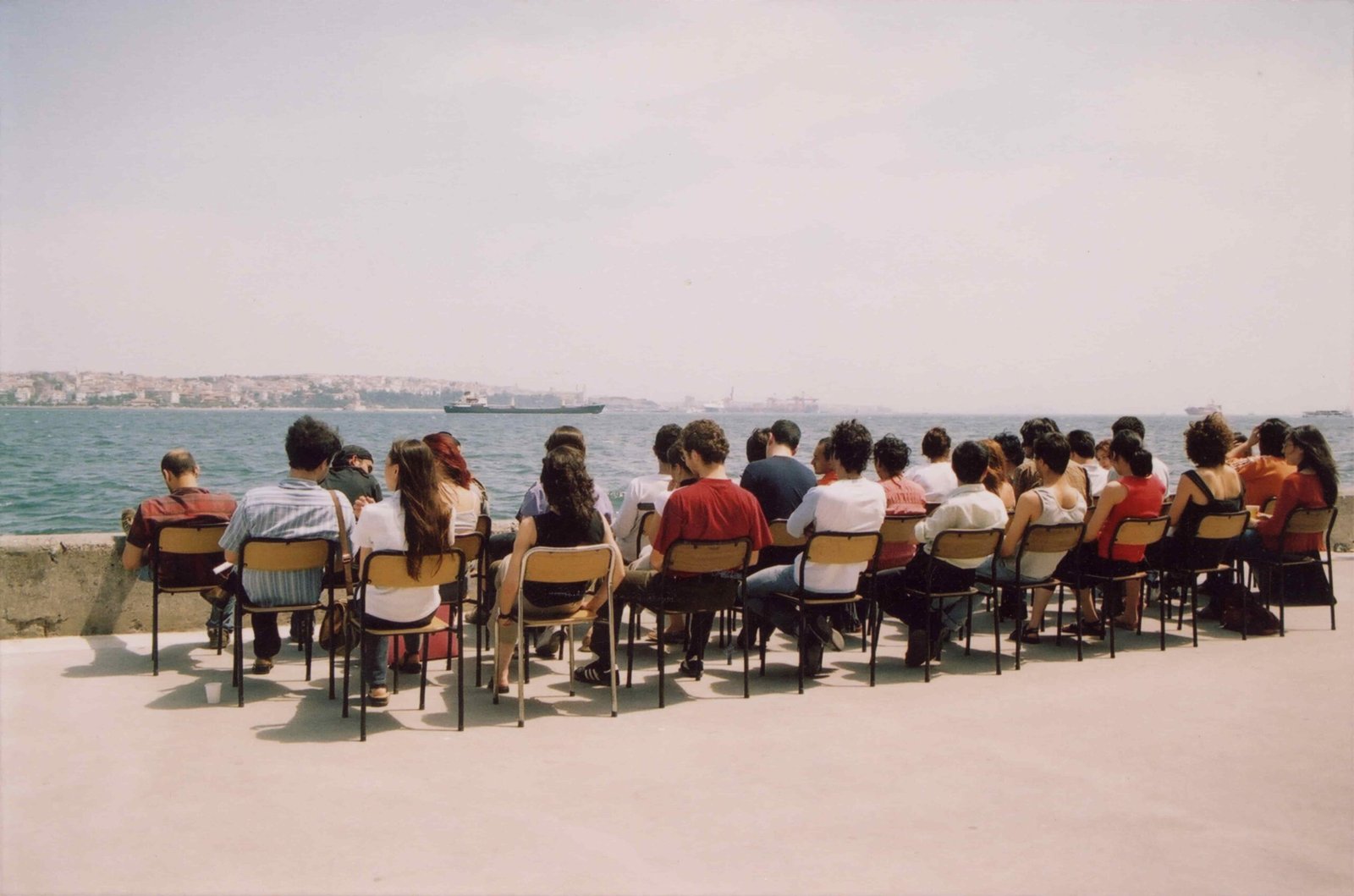 Drawing on the workshop’s oft-repeated motto—“Same pedal, different direction; different pedal, same direction”—the exhibition “We’ve Been on the Carpet Since the ’90s” sheds light on the history of shared practices in the workshop and on individual trajectories. While unpicking the knots of a community woven from past to present, it pursues a kinship of production across generations.
Drawing on the workshop’s oft-repeated motto—“Same pedal, different direction; different pedal, same direction”—the exhibition “We’ve Been on the Carpet Since the ’90s” sheds light on the history of shared practices in the workshop and on individual trajectories. While unpicking the knots of a community woven from past to present, it pursues a kinship of production across generations.
The exhibition will remain on view at Salt Beyoğlu through March 1, 2026. The accompanying program will begin on Wednesday, October 1, with Şiva Canbazoğlu’s performance a tangible blue on Floor 2 of Salt Beyoğlu.
